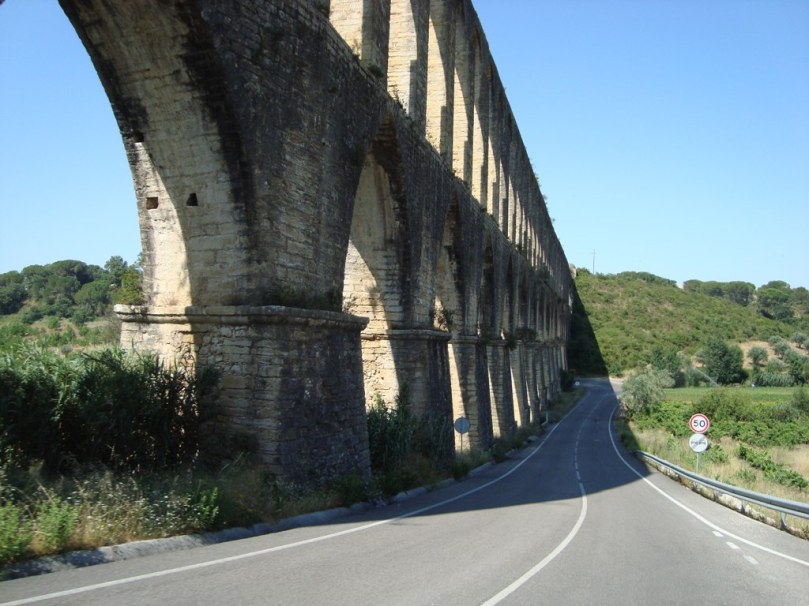
The Coliseum. Ancient Roman aqueducts. The Baths of Caracalla. Your basement. What do they have in common? They would be impossible without concrete.
Concrete is a “composite construction material”; it is composed of aggregate, water and cement. Through hydration, a chemical process in which the water reacts with the cement, the various materials are bonded together, producing a building material that can last thousands of years.
And yet, while concrete has insured that even today we can visit ancient sites such as the Pantheon, it is not impervious. The substance that makes concrete strong can also weaken it: water.

When constructed perfectly and under perfect conditions, the concrete slab in your basement will perform, well, perfectly. But most of the time, we end up with moisture in our basements, either from broken or leaking pipes under the concrete, condensation or moisture coming through the concrete from the earth underneath it. When these things happen your basement can be host to many problems:
– Health Issues – Moist areas are perfect breeding grounds for bacteria, fungus, mold and mildew. As I have posted about before, these can lead to many problems such as headaches and nausea and they can irritate allergies.
– Rotting – All that mold and mildew will eat away at papers, fabrics, wood and anything else organic. And then there’s the smell that will be accompanying your new funky fungi.
– Wet Insulation
– Insect Infestation
– Cracking – this tends to happen when the concrete slab was not cured properly. If there was too much moisture during the curing process, small cracks could form, quite possibly even inside the concrete where they will remain hidden until they grow enough to make their way to the surface leading to…
– Spalling – When a piece of concrete breaks off from a crack, you’ve got spalling.
– Darkening – Moisture should be able to evaporate out of the concrete freely, but when carpeting is installed, it can’t escape as easily and will cause the concrete to darken.

While moisture is the worst problem most basement floors will face, age must also be contended with. Cracking, breaking and flaking can occur as a concrete slab ages and it can be especially common in cold climates because the concrete endures many severe temperature fluctuations. If you are careful and diligent, you can catch most of these problems before they get out of control. For flaking and chips, you can use a patch compound. For holes or cracks, it’s best to use expansive cement so the open space gets entirely filled, then use a patching compound to cover the area.
Another common problem with concrete slab is the surface is often not flat. That can create issues when flooring materials are installed over it.
So if you are looking for flooring to put over the concrete in your basement, what are some of the best choices? Let’s look at the pros and cons of a few:
– Vinyl Floor Tiles – These are very unsuitable for a basement because the vinyl does not allow the slab to dry. And while the vinyl itself may remain unaffected, the adhesive used will fail and your tiles will peel up.
– Hardwood – Generally discouraged for basement floors because any moisture will cause the hardwood to buckle or twist and possibly rot; again, if adhesive is used, it will probably fail. And if the slab is uneven, you will have difficulty installing the hardwood. If you are absolutely dead set on hardwood floors in your basement and your slab is above grade, you will want to hire someone for the installation as the floor will need to be leveled, a moisture barrier must be laid over the slab and a subfloor made from exterior grade plywood will have to be installed. Furring strips will have to be used to raise the floor by at least 2”; this can be an issue since many basements have low ceilings already and you will be losing more headspace. I also suggest using engineered wood flooring as it has higher tolerance to moisture.
– Ceramic Tiles –If your slab is flat, ceramic can be a good option; it’s low maintenance and unaffected by moisture. If the floor is not flat, however, the tiles will crack and break. Installation can be difficult and you may want to hire a professional. Another downside for some people is the discomfort of such a hard material, as well as the coldness of ceramic.
– Carpeting – Definitely a no-go. Carpeting uses adhesive and as we know, the adhesive can fail if there is moisture in the slab. In addition, carpeting can get moldy and rot when exposed to moisture.
– Laminate Tiles – Easy to install, low maintenance, durable and available in many different finishes. You’ll want to use a floating type of laminate in order to avoid using adhesive. Again, you need to make sure your slab is flat and use a moisture barrier because most laminates are not water-proof.
– Water-proof Interlocking Vinyl Tiles – Probably the best choice as these tiles are unaffected by moisture, there is no adhesive to fail, and they are flexible enough to be forgiving on an uneven floor. They are durable and available in several attractive finishes. Installation is easy enough that most homeowners do it themselves.